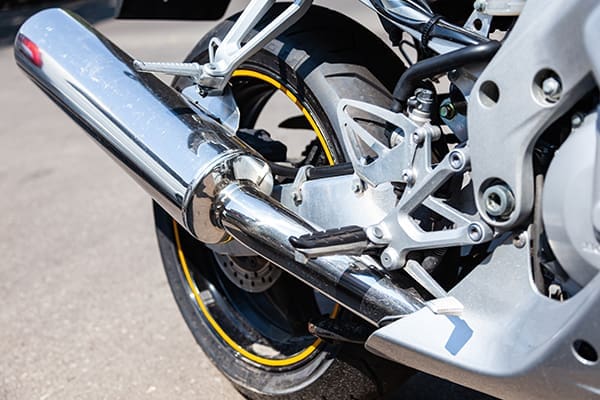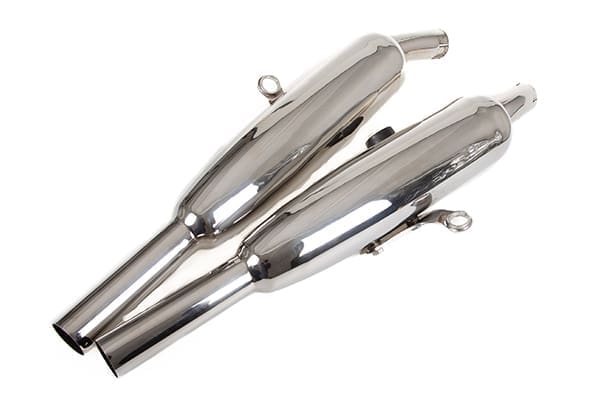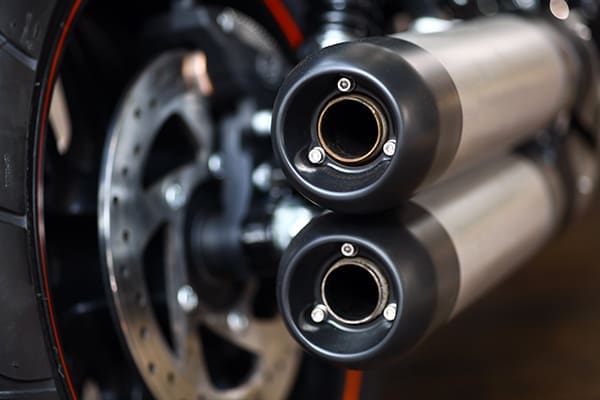We have received payment for the content in this article. Learn more.
The exhaust is more than a metal pipe attached to a motorcycle. It plays a vital role in engine efficiency, noise control and – crucially – road safety.
Whether you’re a seasoned rider or just getting started, understanding how the exhaust system affects your bike’s performance can help you ride more safely and confidently.

Why is the exhaust system important?
Motorcycle exhausts do three key jobs: They guide combustion gases away from the engine, reduce harmful emissions and control sound levels. But there’s more going on under the surface. A healthy exhaust system helps regulate engine temperature, supports consistent throttle response and prevents the buildup of pressure in the wrong places.
Correct functioning of the exhaust system is essential not only for performance but also for safety, as it helps prevent overheating, leaks and loss of engine control.
Types of silencers
Not all mufflers are created equal. There are three main types used on modern bikes:
| Type | Sound Output | Resistance Level | Common Use |
| Straight-through | Loud/aggressive | Low | Sport bikes and custom builds |
| Turbine | Moderate | Medium | Performance-oriented touring motorcycles |
| Chamber | Quiet/stable | High | Commuter and factory-standard motorcycles |
Each type offers a different sound and performance profile. Straight-through exhausts are known for their deep, raw tone, but they need careful setup. If not tuned properly, they may not meet legal standards for noise and emissions.
In the UK, this is especially important. As online retailer AUTODOC says: “In the UK, it is illegal to modify the exhaust to make the bike noisier than it was after receiving type approval. The noise normally isn’t allowed to exceed 80 decibels although some exceptions may be made for larger engines.”

Safety hazards of a faulty exhaust system
A faulty exhaust system isn’t just loud – it can be dangerous. Common issues include:
- Corrosion and rust, which can lead to holes in the pipe
- Loose or damaged fasteners, which may cause parts to rattle or fall off
- Exhaust leaks, releasing hot gases near sensitive parts or the rider’s leg
- Backpressure problems, which affect fuel efficiency and throttle control
If a bike’s exhaust system is damaged or poorly maintained, engine heat may rise and emissions can increase. Riders might also notice uneven acceleration or unusual vibrations – both of which are early warnings that something’s wrong.
Exhaust maintenance
Routine checks and maintenance help extend your exhaust system’s lifespan and prevent accidents. Here’s what to look out for:
- Visual inspection for rust, dents, or cracks
- Checking mounts and bolts to ensure nothing is loose
- Cleaning the inside to remove soot and carbon buildup
- Listening for unusual sounds or hissing that may indicate a leak
It’s best to carry out a detailed inspection every few thousand miles or at the start of each riding season. If you’re unsure, a professional mechanic can test for leaks and assess performance. For both new and experienced riders, paying attention to your exhaust isn’t just about performance – it’s about safety.





